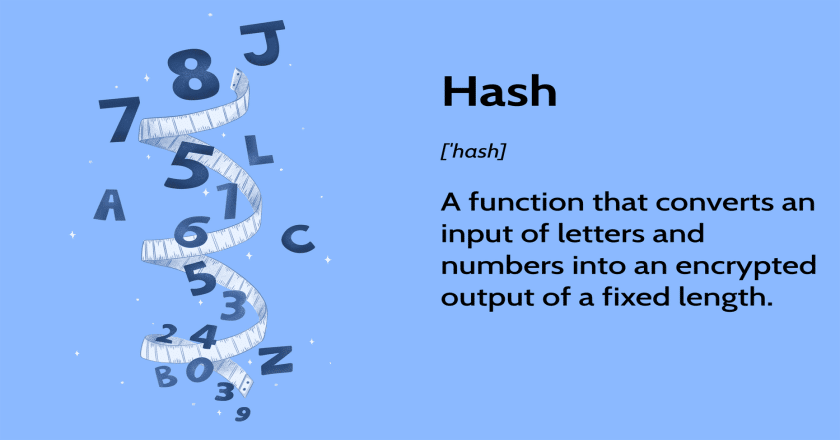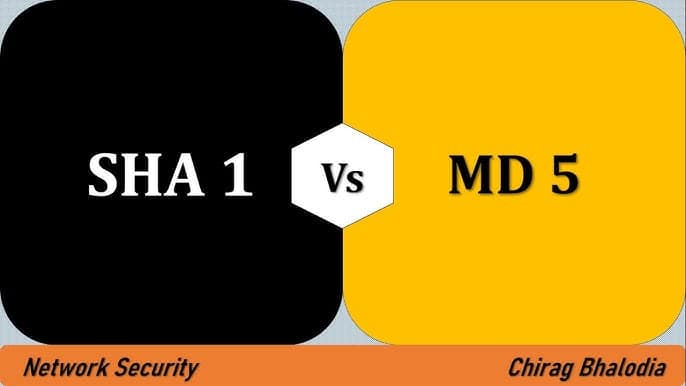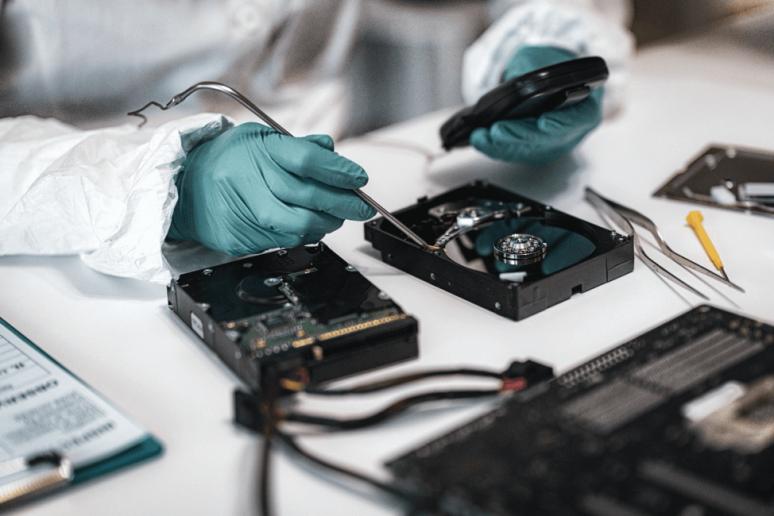In the area of digital forensics, which is changing very quickly, keeping digital data safe is very important. MD5 and SHA1 were once thought to be the best security methods for forensic investigations, but now they are being looked at more closely because they are weak. Even though worries are rising, they are still used to make sure that proof is real in digital forensics. As technology changes, the question comes up: Are these hash numbers no longer useful or necessary? This piece talks about how MD5 and SHA1 are used in digital forensics. It talks about their pros and cons and the current discussion about their future in cybersecurity.
MD5 and SHA1: Essential Hash Values in Digital Forensics

-
Content
- What Are MD5 and SHA1?
- Role of MD5 and SHA1 in Digital Forensics
- Limitations and Vulnerabilities
- Are MD5 and SHA1 Outdated?
- The Case for Continued Use
- Conclusion
-
Content
- What Are MD5 and SHA1?
- Role of MD5 and SHA1 in Digital Forensics
- Limitations and Vulnerabilities
- Are MD5 and SHA1 Outdated?
- The Case for Continued Use
- Conclusion
What Are MD5 and SHA1?
1. Understanding MD5
The cryptographic hash function known as MD5 (Message Digest Algorithm 5) was developed in the early 1990s and generates a hash value of 128 bits. It was originally created to confirm the integrity of data, but it quickly gained popularity in cryptography. By producing a hash value for files, MD5 aids in digital forensics by ensuring the legitimacy of digital evidence and enabling investigators to look for changes.
2. Understanding SHA1
Introduced to secure data transfers, SHA1 (Secure Hash Algorithm 1) generates a 160-bit hash result. Similar to MD5, SHA1 has become crucial for confirming data integrity in digital forensics. Investigators are able to identify even the smallest alterations in the data by creating a distinct hash value for every piece of evidence.
3. The Hashing Process
Both MD5 and SHA1 work by processing the data you give them to make a fixed-size hash number. This hash is a unique number that makes sure if the data is changed, the hash value will also change, which could mean that the data has been tampered with.
Role of MD5 and SHA1 in Digital Forensics
1. Integrity Verification of Evidence
In digital forensics, one of the most important jobs of hash value methods like MD5 and SHA1 is to make sure that proof is real. When police take digital evidence from crime scenes, they need to make sure that the data doesn’t get changed during the investigation. Forensic experts can give each piece of evidence a unique fingerprint using hash values. This way, any changes in the future, even small ones, would be immediately apparent by comparing the original hash value to the current one.
2. Common Use Cases in Forensic Investigations
MD5 and SHA1 are often used in digital forensics investigations, especially to recover lost data, look for malware, and make sure that files are intact. For instance, when an investigator gets data from a suspect’s hard drive, they create a hash value to make sure that the data doesn’t get changed while the investigation is going on. In the same way, hash values are used in network security to find changes made by hackers to data being sent. Many forensic tools, like EnCase and FTK, use hash values to make sure that the digital evidence they collect is real.
3. High-Profile Cases Involving MD5/SHA1
In the well-known 2011 Sony PlayStation Network breach, SHA1 hash values were used by forensic detectives to make sure that the files that were stolen were real. In the same way, MD5 was used to make sure that no more changes were made to the retrieved data after the 2013 Target data hack. These cases show how important hash value algorithms are for keeping digital forensics investigations safe. They help investigators keep track of the chain of custody and stop any changes that aren’t supposed to be made.
Limitations and Vulnerabilities
1. Collision Attacks Against MD5 and SHA1
One of the biggest problems with MD5 and SHA1 is that they can be broken into through collision attacks. In these methods, two different sources can lead to the same hash result, which makes digital proof less reliable. Because both the original file and the changed file would have the same hash, this flaw lets bad people change files without being caught.
2. Why These Algorithms Are Considered Insecure Today
Both MD5 and SHA1 have become more insecure as a result of increases in processing capacity. These algorithms are inappropriate for safeguarding sensitive digital forensics data as contemporary attackers may more readily create collisions to take advantage of their flaws. They are thus no longer regarded as suitable for use in settings where security is crucial.
3. Real-World Examples of Collisions
In 2004, researchers discovered the first collision for MD5, and later, in 2017, SHA1 was successfully broken by Google and the CWI Institute. These real-world examples demonstrated the inadequacy of these algorithms in protecting digital forensics software from tampering, leading to widespread recommendations to adopt more secure algorithms like SHA-256.
Are MD5 and SHA1 Outdated?
1. Comparison with Modern Hashing Algorithms
Because of their shortcomings, more secure algorithms like SHA-256 and SHA-3 have been developed and used, despite the fact that MD5 and SHA1 were formerly often employed in digital forensics. Both MD5 and SHA1 are vulnerable to collision attacks, but these more recent algorithms provide superior defense. Because SHA-256, for instance, produces a 256-bit hash value, it is far more difficult for attackers to identify two inputs that result in the same output. Because of their increased security, SHA-256 and SHA-3 are now the recommended options for sectors like cybersecurity and forensic analysis that depend on cryptographic integrity.
2. Current Guidelines and Best Practices in Digital Forensics
As forensic investigations evolve, so too do the standards that govern them. Current best practices in digital forensics emphasize the use of more secure algorithms like SHA-256 to safeguard the integrity of digital evidence. Many organizations, including law enforcement and computer forensics companies, have shifted to these modern standards to ensure data security. However, despite the known vulnerabilities of MD5 and SHA1, they are still used in some cases for legacy systems or where speed is prioritized over security.
3. Forensic Tools and Their Reliance on Legacy Algorithms
Many forensic tools still support MD5 and SHA1 because of their historical usage in a variety of investigations, even if contemporary algorithms are becoming more and more popular. Investigators may create hash values using both traditional and contemporary techniques with the use of programs like SPF Pro, Autopsy, and FTK Imager. This guarantees compatibility with earlier scenarios in which MD5 or SHA1 evidence was gathered. However, there is growing pressure to switch completely to more secure algorithms like SHA-256 for all facets of forensic inquiry as network forensics tools and other cutting-edge technologies continue to progress.
The Case for Continued Use
1. Situations Where MD5/SHA1 Are Still Used Effectively
Although MD5 and SHA1 have known flaws, they are still used in cases where speed and efficiency are more important than security. For instance, they are often used in older systems where it might not be possible or cost-effective to switch to more safe methods. Also, these methods make it easy to check the accuracy of digital evidence quickly during low-risk forensic investigations where a crash attack is not likely to happen.
2. Balancing Risk and Utility in Forensic Investigations
A lot of the time, forensic experts have to weigh the risks of using old methods against the benefits they offer. Even though MD5 and SHA1 aren’t as safe as newer choices like SHA-256, they can still be useful in situations where speed isn’t very important. In some situations, the ease of using these methods and the fact that they have been used in the past to solve problems justify their continued use.
3. Transition Strategies for Organizations
For organizations still relying on MD5 or SHA1, transitioning to modern hashing algorithms should be a priority. A phased approach is often recommended, allowing systems to adopt stronger algorithms like SHA-256 while maintaining compatibility with older evidence files. This ensures that forensic investigations can still rely on past data while enhancing security for future cases.
Conclusion
Understanding what is hash value and its role in digital forensics is crucial for maintaining the integrity of digital evidence. Both MD5 and SHA1 provide a hash value definition that helps investigators verify the authenticity of data. However, these legacy algorithms face challenges today due to their vulnerability to collision attacks. As more secure algorithms like SHA-256 emerge, the relevance of MD5 and SHA1 is questioned.
Even with these worries, they are still useful in some situations, especially when dealing with old systems or low-risk studies. It is important to move toward more modern algorithms, but forensic experts can connect old and new methods by knowing how these older algorithms define hash values. Organizations can switch to newer standards while making sure that digital proof from the past can still be checked by balancing risk and usefulness.




